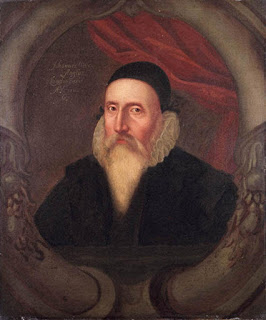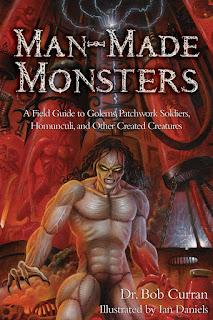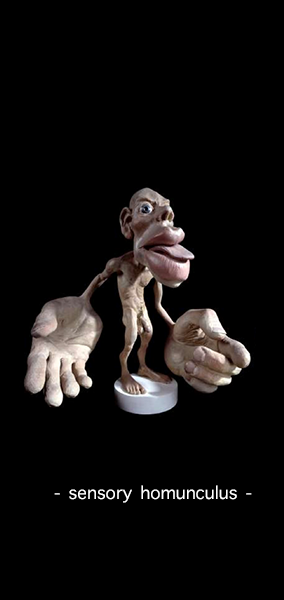Well, well, well. If you are one who thinks that Alchemy is a joke and that witchcraft and modern science are not at all related…THIS ONE IS FOR YOU.
Folks, we should have nipped this in the bud a long time ago. Back when they first fed us the lie of EVOLUTION. Which was only a ploy to take us from the TRUTH of GOD’s word and put us back at the mercy of the “illumined” ELITE. You know the ones who declare themselves to be higher than the rest of us, and even higher than GOD himself. They ones who love to keep their “SECRETS’ in order to CONTROL the MASSES. They use their “MAGIC WORDS” designed to make you feel inferior and to make themselves sound intelligent. BUT IT IS ALL HOCUS POCUS.
PEOPLE when will you wake up and see that the SCIENTIFIC, TECHNOLOGICAL, AND MEDICAL INDUSTRIES are not working in YOUR best interest. THEY were created to protect the interests of the STOCKHOLDERS, the ELITE, the MONEY HOLDERS. To them, you an I are nothing more than useless blobs of flesh using up all their resources and interfering with the illustrious plans.
THEY would like to do away with the majority of the population, utilize those who will submit and create REPLACEMENTS where needed. Replacements that will follow orders and not require food, water, rest, rights!!!
THEY do not acknowledge GOD in their world. Without GOD, they have no conscience, no love, no compassion. For them there is no right or wrong. They do as they damn well please, and they are DAMNED! Recompense is coming. Don’t get caught on the wrong side when HE arrives!
SPACER
If you have not seen the following posts, please check them out. VERY RELEVENT!
It’s in The Blood – Part 1; Part 2, Part 3; Part 4; Part 5; Part 6; Part 7;
Part 8a; Part 8b; Part 9; Part 10; Part 11
CRISPR – Part 1; Part 2; Part 3; Part 4
Do You Believe in Magick? Part 16 – Science is MAGICK/WITCHCRAFT
MAD, MAD SCIENTISTS – IN THEIR OWN WORDS!!
Science – The MagicK that will DESTROY Mankind
spacer
The experiment has also proved that a theory shared 70 years ago – the Schwinger effect – was correct.

This is the first time that Schwinger effect has been observed in a laboratory setting.
A team of scientists has announced a surprising discovery – that they were able to create matter out of nothing. The experiment was carried out in January 2022, in which strong electric fields were created in a simple laboratory leveraging the unique properties of grapheme, which enabled the creation of particle-antiparticle pair from nothing at all, according to a report in Big Think. However, it is to be noted that according to laws of physics, there is no truly empty space. Even in the absence of particles, there are quantum fields.
According to Big Think, the latest experiment proved that a theory shared 70 years ago was correct. Julian Schwinger, one of the founders of quantum field theory, had proposed that the Universe can make something from nothing.
Schwinger effect is a theory that predicted a phenomenon whereby matter is created by a strong electric field.The predictive model comes from quantum electrodynamics (QED) in which electron-positron pairs are spontaneously created in the presence of an electric field.
The latest experiment by researchers at University of Manchester will help scientists understand how the Universe is able to create something from nothing. The interest in the phenomenon started when researchers started studying the Big Bang theory, which led to the creation of the universe as we know it.
This is the first time that Schwinger effect has been observed in a laboratory setting. Till now, all the theories said that it can only take place in high-energy regions like black holes and neutron stars.
On Earth, very strong electric fields are created at laser facilities, but even with the strongest of these, creation of matter was never successfully achieved.
spacer

To be clear, the work, published in the journal Cell, is in very early stages. The team did not create living, breathing part-human animals. They created very early embryos and never implanted them into the uterus of any animal. Concerns about human-animal chimeras center on what Stanford bioethicist and legal scholar Hank Greely calls “brains, balls, and beauty” — worries that an animal could look at all human, be born with a human brain, or be able to reproduce.
This experiment carried none of those risks, but makes it clear that the time to start discussing the ethics of human-animal chimeras is now. “It’s a first-in-kind experiment,” Nita Farahany, a professor of law and philosophy at the Duke University School of Law who co-authored a perspective piece on the ethics of the research, told STAT. “Whenever you cross a major technological or biological hurdle like this one, it’s a good moment to stop and reflect.”
The report provides the scientific details of work that began several years ago in Spain and China and made waves after it was leaked to the El País newspaper in 2019. (The Covid-19 pandemic delayed the completion and publication of the work, the researchers said.)
In the experiment, researchers injected 25 of a specific kind of human pluripotent stem cell (called “pinnacle stem cells” because they can turn into any kind of cell, including extraembryonic cells such as placenta) into each of 132 6-day-old macaque monkey embryos. The researchers stained the human cells with an exceptionally bright red fluorescent protein called tdTomato so they would be detectable within the monkey embryo as it developed.
Still, the researchers found a high number of human cells in the chimeric embryos that survived. On average, 3% to 4% of the cells in the embryos were human, and in one embryo, up to 7% were. “When we observed human cells were alive in monkey embryos, that was amazing,” Tao Tan, a principal investigator at the State Key Laboratory of Primate Biomedical Research and Kunming University of Science and Technology in Yunnan, China, and one of the paper’s lead authors, told STAT.
Work published earlier this year by a research group in France showed that human cells did not survive well in monkey embryos. The key to the success in the new paper may be the particular stem cells that were used, as well as the way they were cultured.
The work, other scientists said, is the most successful to date in keeping a relatively large number of human cells alive and healthy in a nonhuman embryo. “This paper is a dramatic demonstration of the ability of human pluripotent stem cells to be incorporated into the embryos of the cynomolgus monkey,” said Magdalena Zernicka-Goetz, a developmental biologist at Caltech whose lab first developed, in mice, the technique of growing embryos in lab dishes. Such work gained increasing attention with the announcement last month that Jacob Hanna, a developmental biologist at the Weizmann Institute of Science in Israel, had kept mouse embryos alive and seemingly healthy for an extended period in an artificial womb.
The results published Thursday showed a far higher rate of survival for human cells in a nonhuman embryo than in previous experiments with sheep-human or pig-human chimeras, where sometimes just one in 100,000 cells were human.
It was those disappointing results that pushed the researchers to turn to monkeys, which are much more closely related to humans and have a similar developmental timeline, said the project’s leader, Salk Institute developmental biologist Juan Carlos Izpisua Belmonte. “Human cells do not robustly contribute to chimera formation in species evolutionarily distant to humans,” he said.
In monkeys, it was a different story. “We found the human and monkey cells cooperate with each other in building the embryo,” said Jun Wu, a research team member who is now an assistant professor at UT Southwestern Medical Center in Dallas, but was a staff scientist at the Salk when he worked on the project. Wu’s research has shown that when human cells are placed in culture with mouse cells, “we see the mouse cell actively kill the human cell, but when we place human and monkey cells together, there is no competition.”
Experiments such as this one cannot be funded with federal research dollars, though they break no U.S. laws. The work was conducted in China, not because it was illegal in the United States, the researchers said, but because the monkey embryos, which are difficult to procure and expensive, were available there. The experiment used a total of 150 embryos, which were obtained without harming the monkeys, “just like in the IVF procedure,” Tan said.
But such experiments, which combine human cells with those of animals, are nevertheless controversial. This work, and other work by Izpisua Belmonte, has moved so rapidly, bioethicists have had trouble keeping up.
“The complicated thing is that we need better models of human disease, but the better those models are, the closer they bring us to the ethical issues we were trying to avoid by not doing experiments in humans,” Farahany said. “Remarkable steps forward require urgent public engagement.”
In addition to considerations about research that may blur the line between humans and animals, the work on monkeys raises issues about both animal welfare and human consent. While many “de-identified” human cells can be used in research without consent for specific experiments, that may not be the best approach for highly controversial experiments such as this one, she said.
Izpisua Belmonte and the other researchers agreed that ethical debate and guidelines for such work is critical. They said they discussed the work with ethicists before proceeding and received extensive review and approval from all scientific institutions involved. The paper’s discussion section starts not with scientific findings as is usual in a research paper, but with a statement about ethical considerations.
The researchers say animal-human chimeras could prove a powerful tool in biomedicine and that the new research is important for helping understand what roadblocks stand in the way of merging human cells into animal embryos. Their hope is to understand the principles in monkey-human chimeras, which seem easier to create, and then try to apply that knowledge to the more technically challenging but ethically more acceptable pig-human chimeras.
The researchers, and other scientists STAT contacted for comment, said one of the most exciting things about the new paper was the discovery of “crosstalk” between human and monkey cells in the developing embryo, something that did not occur so readily in human-pig chimeras. “Human cells in pig tissue is akin to communications between two distant languages, such as Chinese and French, whereas human cells in macaques is like communications between two closely related languages, like Spanish and French,” said Izpisua Belmonte. “We do think understanding interspecific cross-talk could be the key for generating more successful chimeras.”
One major goal, they say, is to find a way to grow human organs in pigs or other animals to ease the shortage for transplants. Currently, more than 100,000 Americans are awaiting organs for transplant. But some scientists question whether that goal is achievable given how hard the research has proven so far.
“How realistic is it to think that someday this line of research could actually be able to produce organs for transplants into human patients?” asked Paul Knoepfler, a stem cell scientist and professor at the UC Davis School of Medicine. “If that is extremely unlikely given technical challenges, even setting aside ethical considerations, how much further should this research be pushed just to advance our knowledge of human development?”
Knoepfler said the research posed a host of other questions as well. “Is there a point at which a chimera is “too human”? For instance, what if a monkey-human chimera ended up being more human than monkey, should special rules apply?” he asked. “What if there are many human cells in the developing brain of a chimera?”
The issue of the brain merits special consideration, in part because many consider the brain the organ that makes humans unique. Because of these considerations, the National Academy of Sciences convened a group to weigh in on the ethics and governance of the emerging field of neural organoids, transplants, and chimeras. The report, released earlier this month, stated that many ethical issues in the field could be addressed by existing mechanisms, but that it was critical to continually reassess concerns as the science developed.
The Cell paper is interesting, said the report committee’s co-chair, Joshua Sanes, a neuroscientist and professor of molecular and cell biology at Harvard, but it is not pertinent to a discussion about neural chimeras because the less-than-3-week-old embryos had not reached the point of having a nervous system. Still, he said the new work reinforced the committee’s urging that ethical conversations “get ahead of the curve.”
“It’s pretty clear the entire field is moving ahead with great rapidity,” Sanes said. “It’s not clear how fast it will go, or in which direction, but we do need to revisit these issues regularly.”
Work is already afoot to loosen internationally recognized ethical limits that prohibit scientists from growing any human embryo outside the body for longer than 14 days. The rule had been in place for decades, and was developed in a time when it was technologically impossible to keep embryos alive outside the body for more than a few days. But that’s changed dramatically in recent years, and with increased interest in powerful gene editing tools such as CRISPR to genetically modify embryos to cure disease, motivation is strong to push biological limits further — and to have clear guidelines about what may be going too far.
Said Knoepfler: “Leaving it up to every researcher and institutional ethics review board to entirely come up with their own rules on human embryo research seems to me like a recipe for big trouble.”
spacer
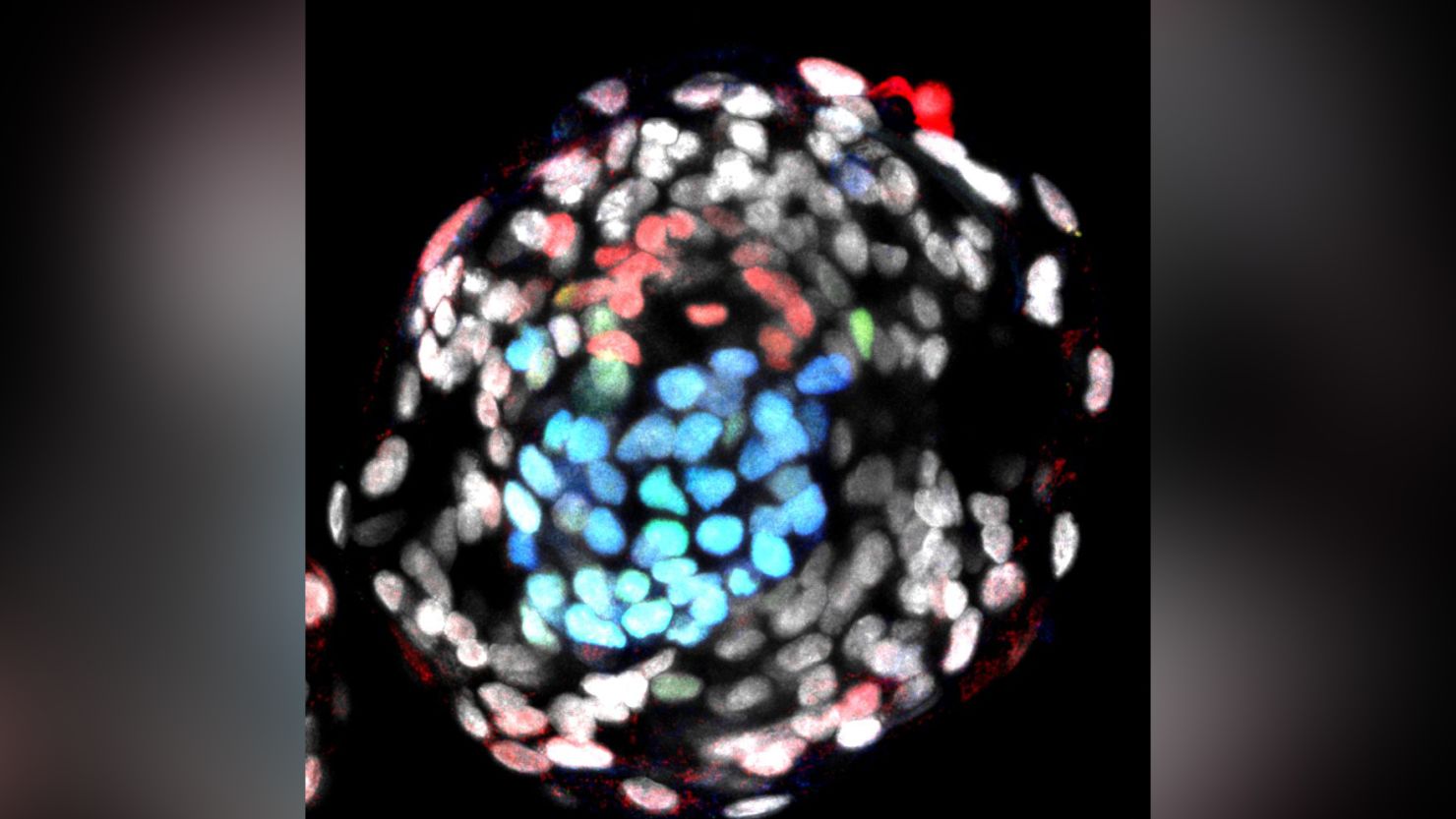
A team of researchers in the United States and United Kingdom say they have created the world’s first synthetic human embryo-like structures from stem cells, bypassing the need for eggs and sperm.
These embryo-like structures are at the very earliest stages of human development: They don’t have a beating heart or a brain, for example. But scientists say they could one day help advance the understanding of genetic diseases or the causes of miscarriages.
The research raises critical legal and ethical questions, and many countries, including the US, don’t have laws governing the creation or treatment of synthetic embryos.
The pace of discoveries in this field and the growing sophistication of these models have alarmed bioethics experts as they push ever closer to the edge of life.
“Unlike human embryos arising from in vitro fertilization (IVF), where there is an established legal framework, there are currently no clear regulations governing stem cell derived models of human embryos. There is an urgent need for regulations to provide a framework for the creation and use of stem cell derived models of human embryos,” James Briscoe, associate research director at the Francis Crick Institute, said in a statement.
Dr. Magdalena Zernicka-Goetz described the work in a presentation Wednesday to the International Society for Stem Cell Research’s annual meeting in Boston. Zernicka-Goetz, a professor of biology and biological engineering at CalTech and the University of Cambridge, said the research has been accepted at a well-regarded scientific journal but has not been published. The research was first reported by The Guardian.
Zernicka-Goetz and her team, along with a rival team in Israel, had previously described creating model embryo-like structures from mouse stem cells. Those “embryoids” showed the beginnings of a brain, heart and intestinal tract after about eight days of development.
The embryo-like structures that Zernicka-Goetz says her lab has created were grown from single human embryonic stem cells that were coaxed to develop into three distinct tissue layers, she said. They include cells that would typically go on to develop a yolk sac, a placenta and the embryo itself.
She told CNN that the embryo-like structures her lab has created are also the first to have germ cells that would go on to develop into egg and sperm.
“I just wish to stress that they are not human embryos,” Zernicka-Goetz said. “They are embryo models, but they are very exciting because they are very looking similar to human embryos and very important path towards discovery of why so many pregnancies fail, as the majority of the pregnancies fail around the time of the development at which we build these embryo-like structures.”
Researchers hope these model embryos will shed light on the “black box” of human development, the period following 14 days after fertilization, which is the agreed limit for scientists to grow and study embryos in a lab.
Right now, the synthetic model human embryos are confined to test tubes. It would be illegal to implant one in a womb, and animal research with stem cells from mice and monkeys has shown that even when scientists have attempted to implant them, they don’t survive – probably because researchers haven’t figured out how to fully replicate the conditions of pregnancy.
Zernicka-Goetz said that the aim of her research wasn’t to create life but to prevent its loss, understanding why embryos sometime fail to develop after fertilization and implantation.
“We know remarkably little about this step in human development, but it is a time where many pregnancies are lost, especially in an IVF setting,” Roger Sturmey, senior research fellow in maternal and fetal health at the University of Manchester in the UK, said in a statement.
“Currently, we can say that these ‘synthetic embryos’ share a number of features with blastocysts, but it is important to recognise that the way that synthetic embryos are formed is different to what happens when a normal embryo forms a blastocyst,” he said. “There is much work to be done to determine the similarities and differences between synthetic embryos and embryos that form from the union of an egg and a sperm.”
spacer

Scientists create ‘synthetic human embryos’ from stem cells: report

Scientists speaking at the International Society for Stem Cell Research‘s annual conference in Boston, Massachusetts revealed that for the first time, researchers have successfully engineered “synthetic human embryos using stem cells,” The Guardian exclusively reported on Wednesday. (We NEVER should have ALLOWED STEMS CELL experimentation)
“Scientists say these model embryos, which resemble those in the earliest stages of human development, could provide a crucial window on the impact of genetic disorders and the biological causes of recurrent miscarriage,” the British outlet wrote. (DON’T BUY THEIR BS!! THAT IS JUST THE EXCUSE THEY GIVE THE UNWITTING PUBLIC. THEY DON’T CARE ABOUT SOLVING GENETIC DISORDERS. MY GOODNESS, CREATE THEM!! THEY DON’T CARE ABOUT WOMEN WHO MISCARRY! GOOD GRIEF THEY WANT BABIES TO BE MURDERED, PREFERRABLY IN THE WOMB!! WAKE UP)
It noted, however, that “the work also raises serious ethical and legal issues as the lab-grown entities fall outside current legislation in the UK and most other countries.“
| There are so many reasons why using human stem cells in their experimentation is so MORALLY, ETHICALLY and SPIRITUALLY WRONG!! First of all, when they first began this crime against humanity, they were taking their stem cells from either aborted babies or from babies the created in the lab using donated sperm and eggs. They used these “stem cells” to conduct all manner of insane experiments on plants, animals and humans. Creating GOD only knows what kinds of issues and creatures. So the protests against this practice is not only against they way they acquire the stem cells, and the lives that are sacrificed, but for the corruption to life forms and the creation of new life forms. THIS IS THE SIN FOR WHICH THE FALLEN ANGELS ARE DAMNED FOREVER!! |
who unveiled the breakthrough, explained that “We can create human embryo-like models by the reprogramming of [embryonic stem] cells.
Żernicka-Goetz told The Guardian that “Our human model is the first three-lineage human embryo model that specifies amnion and germ cells, precursor cells of egg and sperm,” describing the specimen as “beautiful and created entirely from embryonic stem cells.”
Although “the structures do not have a beating heart or the beginnings of a brain but include cells that would typically go on to form the placenta, yolk sac and the embryo itself,” The Guardian pointed out that there are significant concerns that accompany the developments.
Robin Lovell-Badge, the head of stem cell biology and developmental genetics at the Francis Crick Institute in London, stated to the paper that “if the whole intention is that these models are very much like normal embryos, then in a way they should be treated the same.” Lovell-Badge stressed, however, that “currently in legislation, they’re not” and that “people are worried about this.”
READ MORE: Is free will ‘compatible with what we know about the laws of nature’? This physicist says no
The Guardian’s report continues at this link.
spacer
spacer
spacer
‘Synthetic’ embryo with brain and beating heart grown from stem cells by Cambridge scientists
By Sarah Collins and Jacqueline Garget
25 August, 2022
Researchers from the University of Cambridge have created model embryos from mouse stem cells that form a brain, a beating heart, and the foundations of all the other organs of the body – a new avenue for recreating the first stages of life.
The team, led by Professor Magdalena Zernicka-Goetz, developed the embryo model without eggs or sperm, and instead used stem cells – the body’s master cells, which can develop into almost any cell type in the body.
The researchers mimicked natural processes in the lab by guiding the three types of stem cells found in early mammalian development to the point where they start interacting. By inducing the expression of a particular set of genes and establishing a unique environment for their interactions, the researchers were able to get the stem cells to ‘talk’ to each other.
The stem cells self-organised into structures that progressed through the successive developmental stages until they had beating hearts and the foundations of the brain, as well as the yolk sac where the embryo develops and gets nutrients from in its first weeks. Unlike other synthetic embryos, the Cambridge-developed models reached the point where the entire brain, including the anterior portion, began to develop.
This is a further point in development than has been achieved in any other stem cell-derived model.

Natural (top) and synthetic (bottom) embryos side by side to show comparable brain and heart formation. Image credit: Amadei and Handford
The team say their results, the result of more than a decade of research that progressively led to more and more complex embryo-like structures and reported today in the journal Nature, could help researchers understand why some embryos fail while others go on to develop into a healthy pregnancy. Additionally, the results could be used to guide repair and development of synthetic human organs for transplantation.
“Our mouse embryo model not only develops a brain, but also a beating heart, all the components that go on to make up the body,” said Zernicka-Goetz, Professor in Mammalian Development and Stem Cell Biology in Cambridge’s Department of Physiology, Development and Neuroscience, adding:
“It’s just unbelievable that we’ve got this far. This has been the dream of our community for years, and a major focus of our work for a decade, and finally we’ve done it.”
For a human embryo to develop successfully, there needs to be a ‘dialogue’ between the tissues that will become the embryo, and the tissues that will connect the embryo to the mother. In the first week after fertilisation, three types of stem cells develop: one will eventually become the tissues of the body, and the other two support the embryo’s development. One of these extraembryonic stem cell types will become the placenta, which connects the foetus to the mother and provides oxygen and nutrients; and the second is the yolk sac, where the embryo grows and where it gets its nutrients from in early development.
Many pregnancies fail at the point when the three types of stem cells begin to send mechanical and chemical signals to each other, which tell the embryo how to develop properly.
“So many pregnancies fail around this time, before most women realise they are pregnant,” said Zernicka-Goetz, who is also Professor of Biology and Biological Engineering at Caltech. “This period is the foundation for everything else that follows in pregnancy. If it goes wrong, the pregnancy will fail.”
Over the past decade, Professor Zernicka-Goetz’s group in Cambridge has been studying these earliest stages of pregnancy, in order to understand why some pregnancies fail and some succeed.
“The stem cell embryo model is important because it gives us accessibility to the developing structure at a stage that is normally hidden from us due to the implantation of the tiny embryo into the mother’s womb.”
Zernicka-Goetz added: “This accessibility allows us to manipulate genes to understand their developmental roles in a model experimental system.”
To guide the development of their synthetic embryo, the researchers put together cultured stem cells representing each of the three types of tissue in the right proportions and environment to promote their growth and communication with each other, eventually self-assembling into an embryo.
The researchers found that the extraembryonic cells signal to embryonic cells by chemical signals but also mechanistically, or through touch, guiding the embryo’s development.
“This period of human life is so mysterious, so to be able to see how it happens in a dish – to have access to these individual stem cells, to understand why so many pregnancies fail and how we might be able to prevent that from happening – is quite special,” said Zernicka-Goetz. “We looked at the dialogue that has to happen between the different types of stem cell at that time – we’ve shown how it occurs and how it can go wrong.”
A major advance in the study is the ability to generate the entire brain, in particular the anterior part, which has been a major goal in the development of synthetic embryos.
This works in Zernicka-Goetz’s system because this part of the brain requires signals from one of the extraembryonic tissues to be able to develop. The team thought that this might be taking place from their 2018 and 2021 studies, which used the same component cells to develop into embryos at a slightly earlier stage. Now, by pushing development just one day further, they can definitively say that their model is the very first to signal development of the anterior, and in fact the whole, brain.
“This opens new possibilities to study the mechanisms of neurodevelopment in an experimental model,” said Zernicka-Goetz. “In fact, we demonstrate the proof of this principle in the paper by knocking out a gene already known to be essential for formation of the neural tube, precursor of the nervous system, and for brain and eye development. In the absence of this gene, the synthetic embryos show exactly the known defects in brain development as in an animal carrying this mutation. This means we can begin to apply this kind of approach to the many genes with unknown function in brain development.”
While the current research was carried out in mouse models, the researchers are developing similar human models with the potential to be directed towards the generation of specific organ types – to understand mechanisms behind crucial processes that would be otherwise impossible to study in real embryos. At present, UK law permits human embryos to be studied in the laboratory only up to the 14th day of development.
If the methods developed by Zernicka-Goetz’s team are shown to be successful with human stem cells in future, they could also be used to guide development of synthetic organs for patients awaiting transplants.
“There are so many people around the world who wait for years for organ transplants,” said Zernicka-Goetz. “What makes our work so exciting is that the knowledge coming out of it could be used to grow correct synthetic human organs to save lives that are currently lost. It should also be possible to affect and heal adult organs by using the knowledge we have on how they are made.
Professor Magdalena Zernicka-Goetz has made an incredible scientific breakthrough.
The creation of synthetic mouse embryos in a test tube that develop brains and beating hearts, starting only with embryonic stem cells, is the culmination of a decade’s work.
Magda explains:
I’m fascinated by the mystery of how embryos work. Every embryo follows a similar journey: one cell becomes many, then they communicate with each other and arrange themselves to form a structure that will provide a blueprint for all adult body parts. But how do embryo cells decide their fate, how do they know where to go and what to do? How do they form the right parts in the right place at the right time?

Image credit: Science Photo Library
Building the first ‘synthetic embryo’ models was a process we achieved step by step. Setting out, we knew that embryonic stem cells could be cultured indefinitely in the lab, and that when they’re injected into an embryo they can potentially contribute to any tissue in the adult organism. The challenge was to guide them to develop into a complete embryo. In addition to the embryonic stem cells we used two kinds of extraembryonic tissue: one of which forms the placenta and the other a sac in which the embryo develops. These tissues are very important, as they send signals to the embryo to develop all its parts at the right time and in the right place.
Combining stem cells representing each of these three types of tissue is easier said than done. We had to find an environment where all three distinct cell types could grow and communicate with each other. And we had to find the right proportions of each cell type, and add them in the right sequence. Once we established these basic principles, the stem cells did the rest: they self-organised to progress through successive developmental stages until they had beating hearts and the foundations for a brain.
The key to our achievement was thinking outside the conventional box. The majority of embryo model studies focus on embryonic stem cells, but don’t consider the significant role of extraembryonic cells. We mixed the right proportions of both embryonic and extraembryonic stem cells. Extraembryonic cells signal to embryonic cells through different means, by chemical signals but also mechanistically ‘by touch’. Our studies are helping to understand these signalling events.

Image credit: Simon Zernicki-Glover
We are developing an analogous model of the human embryo, to understand the mechanisms behind crucial processes that would be otherwise impossible to study. This is important because the great majority of human pregnancies fail at this developmental stage, due to causes that we don’t understand. It will also allow us to identify factors permitting development of healthy human tissues as they form different organs.
Creating the new ‘synthetic embryo’ has taught us a lot about the mechanisms by which the embryo builds itself. We learnt how the extraembryonic tissues direct the embryonic stem cells along the right pathways to signal formation of the correct structures; how cells move between compartments as the multi-layered body plan arises; and how this correctly sets the scene for neurulation – the process where tissue folds to form the neural tube and, in turn, the brain and spinal cord.
This model gives us access to the developing structure at a stage that’s normally hidden from us, when the tiny embryo implants into the mother’s womb. Our model does not have to implant to develop, so it remains completely visible to us, allowing us to see the embryo’s progression through that developmental stage. This accessibility allows us to manipulate genes to understand their developmental roles in a model experimental system.

Natural (top) and synthetic (bottom) embryos side by side to show comparable brain and heart formation. Image credit: Amadei and Handford
It’s certainly true that carrying out this type of work requires passion and resilience. I grew up in Poland under a Communist regime, which meant that traveling wasn’t allowed and thinking differently was not encouraged. There was immense social pressure to conform, and a lot of us rebelled against that. A silver lining of this was a desire to think independently and to persevere despite discouragement. That shaped me as a scientist too.
When I started my research group in Cambridge, I established ways to study the ‘developmental black box’ – the development of the embryo at the time of implantation. My mentors had discouraged me from pursuing it during my PhD because they were concerned it would be difficult to shine light inside this ‘box.’ But I was so taken by the question of how the embryo self-organises that I didn’t give up and, inch by inch, we have worked our way forward.
My advice to all young scientists is to follow your heart. Study a topic that inspires you, and choose an advisor who can be supportive of your style of work. In my opinion, it’s important to guide young scientists in the lab, but also to give them space to explore their individuality. My experience is that the challenges for female scientists increase as they progress through their careers. At later stages, it’s critical to have mentors who understand not only science but also how to balance it with everyday life, including starting a family.

Image credit: Science Photo Library
During my own pregnancy, I was shocked when an early screening showed abnormalities. The sampling was of extraembryonic cells so I waited for the amniocentesis, which samples foetal cells that have fallen into the amniotic fluid. These were normal, which put my mind at ease. The experience led me to study mosaic aneuploidy – a condition in which the embryo has cells with the wrong number of chromosomes alongside chromosomally normal cells. Incredibly, we found that these abnormal cells can be eliminated, and the normal, healthy cells compensate for their absence. For some reason this mechanism doesn’t operate in the tissues that build the placenta, and we’re still trying to understand why and how.
Science is demanding, it’s hard work and it takes away most of your waking hours. I switch off by watching films – I watch a lot foreign films in Polish, French, and Danish, and documentaries and art films. But when I want to lose myself in another narrative, I watch dramas. I’m also a recent convert to gardening, where I can encourage the successful development of other life forms!
It is an incredible feeling and a privilege to have this direct insight into the origins of a new life. It’s like discovering a new planet that we didn’t know.
spacer
WEDNESDAY, 4 JANUARY 2012
spacer
-
a very small human or humanoid creature.
-
HISTORICALa supposed microscopic but fully formed human being from which a fetus was formerly believed to develop.spacer
-


homunculus
Massachusetts Institute of Technology
spacer
Homunculus Definition & Meaning
Dictionary.com
noun,plural ho·mun·cu·li [huh–muhng-kyuh-lahy, hoh-].
-
an artificially made dwarf, supposedly produced in a flask by an alchemist.
-
a fully formed, miniature human body believed, according to some medical theories of the 16th and 17th centuries, to be contained in the spermatozoon.
spacer
Homunculus | The Embryo Project Encyclopedia
The term homunculus is Latin for “little man.” It is used in neurology today to describe the map in the brain of sensory neurons in each part of the body (the somatosensory homunculus). An early use of the word was in the 1572 work by Paracelsus regarding forays into alchemy, De Natura Rerum, in which he gave instructions in how to create an infant human without fertilization or gestation in the womb. In the history of embryology, the homunculus was part of the Enlightenment-era theory of generation called preformationism. The homunculus was the fully formed individual that existed within the germ cell of one of its parents prior to fertilization and would grow in size during gestation until ready to be born.
The origin of the homunculus concept of a pre-existing fetus is usually credited to Dutch telescopist and microscopist Nicolaas Hartsoeker. He receives this credit largely because it was his sketch in the 1694 Essai de Dioptrique of a homunculus in a sperm cell that illustrated the concept most clearly. However, the Italian anatomist Marcello Malpighi proposed in 1673 that the entire structure of the embryo was present in the egg from the very beginning, and that the gestation period involved the growth and unfolding of that pre-existing structure. Around the same time, the French metaphysician Nicolas Malebranche discussed the idea of emboîtement, meaning encasement, for which preformationism is infamous. Emboîtement describes not just a homunculus in the egg cell or sperm cell, but an infinite train of homunculi stretching back to Adam and Eve.
While the imagery of the homunculus is inextricably tied to the theory of preformationism in modern thought, the idea was not taken literally by all of the proponents of the theory. Albrecht von Haller and Charles Bonnet discussed a type of preformed embryo in which the parts were already in place but grew and changed dramatically over the course of gestation; a figurative homunculus rather than a literal one. The idea that a homunculus did exist within parental sperm or eggs was often used derisively by contemporary critics of preformationism to point out its absurdity.
However, neither the critics nor the supporters of preformationism ever spoke of the concept using the term homunculus. The first use of the term homunculus to describe the little preformed man is difficult to document. Anton Leeuwenhoek, the Dutch microscopist famous for pioneering the use of the microscope, used the French “petit l’homme” in his work, and Hartsoeker referred to his homunculus drawing as “petit l’enfant.” According to Clara Pinto-Correia in The Ovary of Eve, the man in the germ cell may not have been actually called a homunculus until F. J. Cole used the term in this manner in his 1930 Early Theories of Sexual Generation. In histories of embryology since, the word homunculus is tightly intertwined with preformationism.
Alchemical Recipe for a Homunculus: Sperm + Rotting Meat = Mini Artificial Human
UPDATED 2 APRIL, 2018 – 18:58 CALEB STROM
The question of how to create life does not just go back to Mary Shelley’s Frankenstein, when the eponymous character used forbidden science to create life. Humans have been interested in creating artificial life since at least classical antiquity and probably much earlier. One manifestation of this is the idea of the homunculus, a diminutive humanoid creature that was believed to be created through magical means.
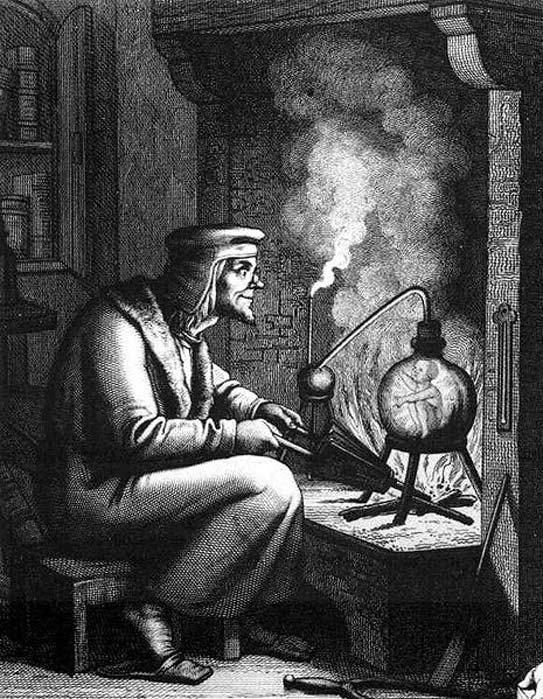
The homunculus is a diminutive humanoid creature believed to be created through magical alchemical means. 19th century engraving of Homunculus from Goethe’s Faust part II ( public domain ).
No Egg Involved
In Renaissance medicine, it was believed that the main life-giving force in reproduction came from the man in the form of the semen. The womb was believed to simply be a warm, nutrient-rich vessel for the embryo to grow and be nourished, though the womb was believed to provide the raw materials needed to make an adult. The raw material which the fetus used to mature were considered important in determining what kind of individual the person would become.
Womb Could Be Replaced by a Warm Chamber
Aristotle did not believe that humans could be artificially made outside of the natural mode of sexual reproduction and childbirth, but his ideas did leave open such a possibility. If the human womb was only a vessel for the fetus, then it could be theoretically exchanged with another vessel provided that human semen was used. Other than the sperm, it was thought that all that was needed was a warm chamber and some sort of raw material which could even be rotting meat.
These early ideas about human reproduction have long since been discredited, but they made the creation of the homunculus seem as plausible during the Middle Ages and the Renaissance as cloning is today.

‘The Alchemist’ by Mattheus van Hellemont ( public domain )
Spontaneous Generation
Another idea that made the creation of the homunculus seem credible was spontaneous generation. Classical, Medieval, and Renaissance philosophers all believed that simple creatures like flies, frogs, and mice could spontaneously arise from inert matter. Flies, for example, were believed to spontaneously form on rotting meat.
The idea of a homunculus spontaneously emerging from inert matter with the addition of semen is very similar to the idea of spontaneous generation which made the idea more acceptable to the mainstream science of the day.
The Homunculus ‘Recipes’
By the early Middle Ages, alchemists and philosophers had begun to compile recipes for making a homunculus. One recipe, described in a text called the Book of the Cow , tells of an elaborate process where a female animal, either a cow or ewe, had to be artificially inseminated with a mixture of semen and a type of phosphorescent mineral and then beheaded when the soon-to-be homunculus was born. After the homunculus was born, it would be fed blood. Other recipes required a female monkey or a mare instead.
The homunculus was believed to have supernatural powers such as the ability to control the motion and appearance of the moon and allow humans to transform themselves into sheep and cows. Fluids from the body of the homunculus were believed to endow the maker of the homunculus with the ability to walk on water among other supernatural abilities.
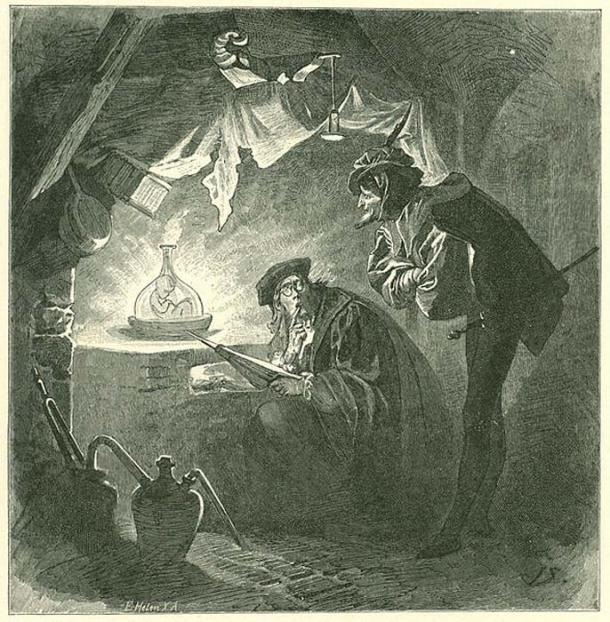
Homunculus in the Vial. Illustration of Johann Wolfgang von Goethe, Faust. Part Two, Act II, laboratory, 1899 ( public domain )
Sperm + Rotting Meat = Humanoid Creature
One recipe, proposed by the 15 th century alchemist Paracelsus, instructed the alchemist to artificially inseminate a horse and allow the semen to putrefy within the womb. He also believed that a homunculus could be created by simply putting sperm in a sealed container with material such as rotting meat or even manure! His instructions as provided in his text De Natura Rerum are as follows :
“Let the Sperm of a man by itself be putrified in a gourd glasse, sealed up, with the highest degree of putrefaction in Horse dung, for the space of forty days, or so long untill it begin to bee alive, move, and stir, which may easily be seen. After this time it will be something like a Man, yet transparent, and without a body. Now after this, if it bee every day warily, and prudently nourished and fed with the Arcanum of Mans blood, and bee for the space of forty weeks kept in a constant, equall heat of Horsedung, it will become a true, and living infant, having all the members of an infant, which is born of a woman, but it will be far lesse. This wee call Homunculus, or Artificiall [Man?]. And this is afterwards to be brought up with as great care, and diligence as any other infant, until it come to riper years of understanding. Now this is one of the greatest secrets that God ever made known to mortall, sinfull man. For this is a miracle, and one of the great wonders of God, and secret above all secrets, and deservedly it ought to be kept amongst the secrets until the last times, when nothing shall be hid [the apocalypse], but all things made manifest.” Paracelsus (via Sandrovigius), De Natura Rerum. Of the Nature of Things.
An Artificial Human
Part of the idea of creating a homunculus was creating an artificial human which makes it comparable to the Jewish tale of the golem which could be created from dust by an especially righteous rabbi. There was opposition by some leaders in the church to the making of homunculi since it was considered playing God and because it was thought wrong to create an intelligent, human-like creature just to be a servant.

The golem is first formed in the shape of a human being. Illustration of a golem by Philippe Semeria. The Hebrew word for Truth, one of the names of God, is written on his forehead. ( CC by SA 3.0 )
Homunculus Ethics
In this way, the narrative of the homunculus mirrors modern debates about genetic engineering and cybernetics. Modern “alchemists” endeavor to make “homunculi” from genetic modification and cybernetics. Many objections to these modern enterprises are very similar objections to the creation of homunculi, particularly the debate over whether homunculi could be considered full persons.
Homunculi were considered powerful but of limited intelligence and reasoning ability, thus they were subhuman and could be enslaved. Not everyone agreed that homunculi were slaves by nature though and some insisted that homunculi must have rational souls.
This mirrors a similar debate today, namely how should genetically modified individuals and AI’s be treated? Can they be equivalent to genetically baseline, biological humans? Should they be given the same rights as humans? Do they have souls? The strange idea of the homunculus is surprisingly relevant today as the dreams of yesterday’s alchemists, artificial life, become the real inventions and creations of today’s scientists and engineers.
Top image: Alchemical illustration of a Homunculus in a vial ( new-moster.wikia.com)
- Mystical Science of Alchemy Arose Independently in Ancient Egypt, China, India
- Alchemy and Immortality – The Tale of Nicolas Flammel and the Lapis Philosophorum
- Spagyric Secrets of The Alchemists: Alchemy as Alternative Medicine
spacer
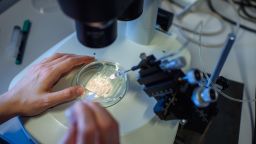



 “
“



